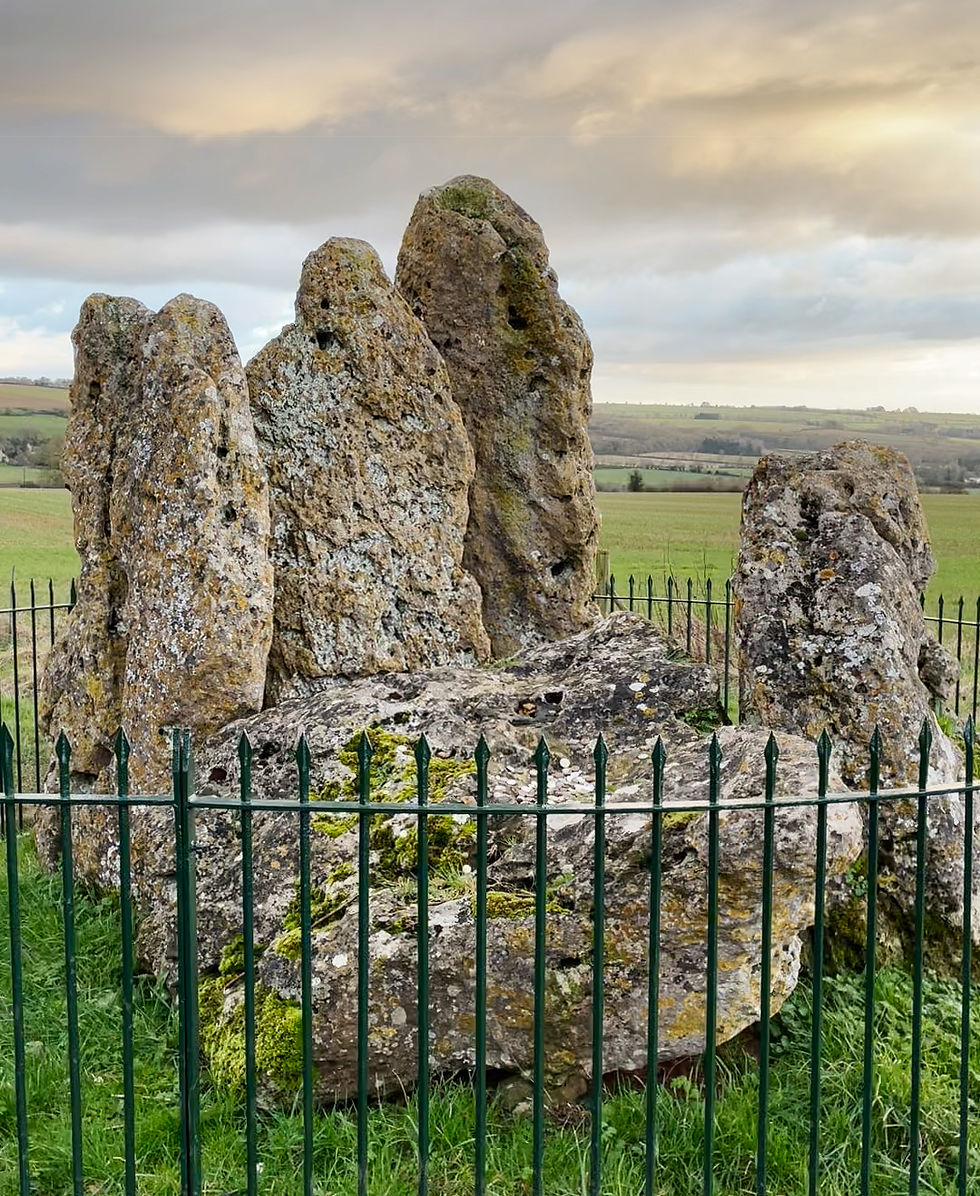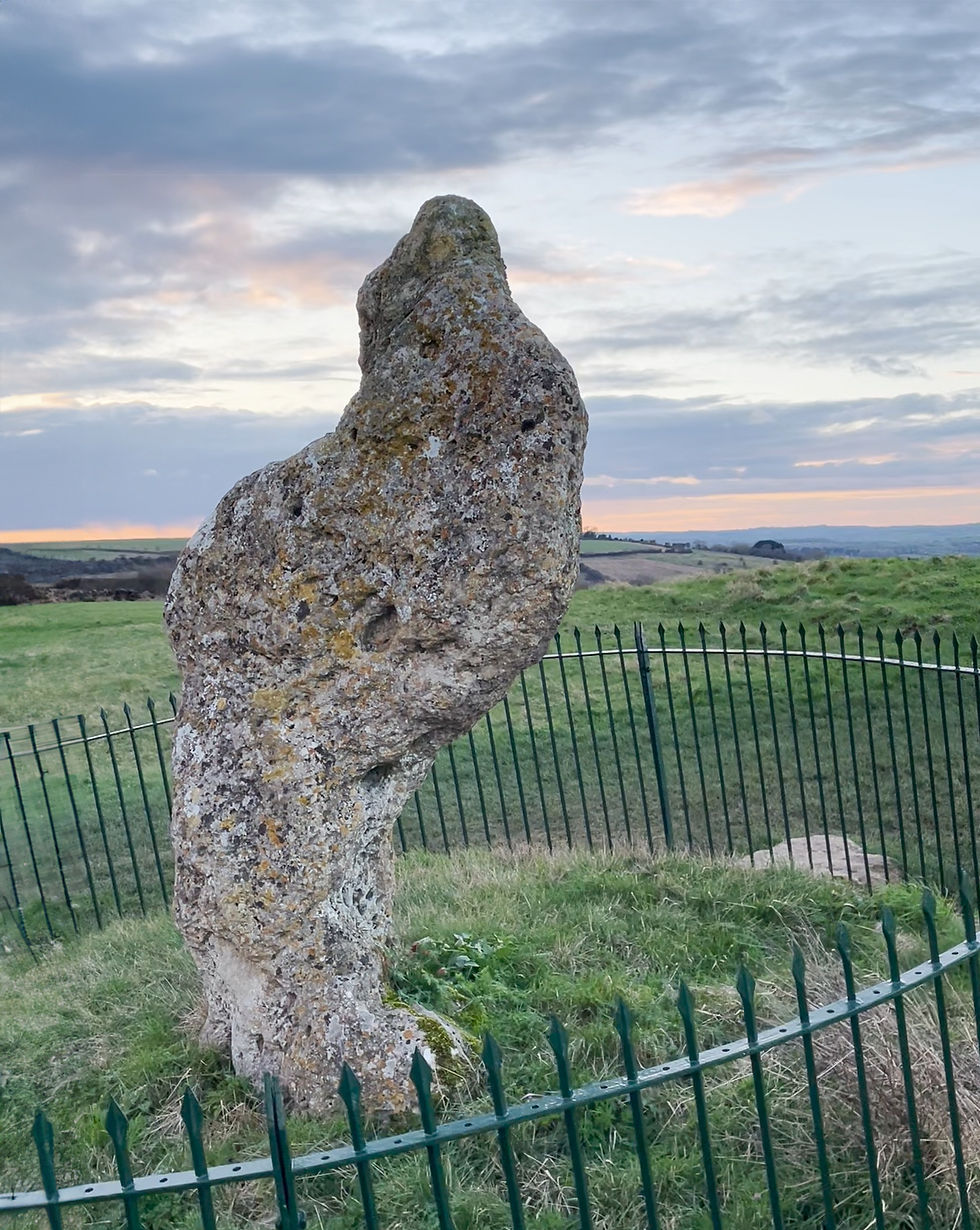
The Kings Men Stone Circle
On a windy hillside high above the village of Long Compton on the Oxfordshire, Warwickshire border, lie a complex of Neolithic and Bronze Age megalithic monuments, collectively known as the Rollright stones. Constructed of local oolitic limestone, they comprise of the Kings Men stone circle, the Whispering Knights dolmen and the single King’s Stone.
The Whispering Knights at 4000BCE, 1500 years older than Stone Henge, is possibly one of the most ancient funerary monuments in Britain. It was a place where human bones were laid after death at a time when death and the fertility of crops were becoming increasingly entwined in the understanding of those who built it.

The Whispering Knights
The Kings Men Stone Circle was constructed some 2500BCE. It has parallels to other stone circles built in The Lake District implying a ritual or trade based connection. At one time it was thought to be a continuous circle with entrance portal but over the years many stones were removed for other purposes, some later returned.
The King’s Stone is the latest, and is thought to be a Bronze Age grave marker. Its curious shape is due to passing shepherds on the ancient drove road to Stow, chipping off fragments to bring them good luck and deflect the ‘evil eye’.
There is no doubt that these three ancient monuments demonstrate a continuation of ritual behaviour on what those who built them believed to be sacred ground. The first account of them is in the 14 century when an unknown author wrote;
'In the neighbourhood of Oxford there are great stones, arranged as it were in some connection by the hand of man. But at what time; or by what people; or for what memorial or significance, is unknown.'

The King’s Stone
During their six thousand years of history, various folkloric stories have developed to explain their existence, in 1610 it was written, that an ancient king was riding across the county with his army and was accosted by a local witch. She said to him:
‘Seven long strides thou shalt take, says she
And if Long Compton thou can see,
King of England thou shalt be!’
His troops gathered in a circle to discuss the challenge, and his knights muttered amongst themselves, but the king boldly took seven steps forward. Rising ground blocked his view of Long Compton in the valley, and the witch cackled:
'As Long Compton thou canst not see,
King of England thou shalt not be!
Rise up stick and stand still stone,
For King of England thou shalt be none;
Thou and thy men hoar stones shall be,
And I myself an elder tree!’
Legend holds that as the church clock strikes midnight, the King Stone comes alive and also the king and his men on certain saints' days, walking down to the nearby brook to drink. They were sites of fertility rituals involving naked capering and baring of breasts. Stories such as this were believed amongst local people well into the 19th century.
The truth is, like with so many of these ancient places, we will never really understand their significance to the people who toiled to create them. However, they provide a tangible link back to the distant past and it is fascinating to consider the astonishing changes they have witnessed in the millennia since they were constructed. The world so utterly changed around them.
Comments